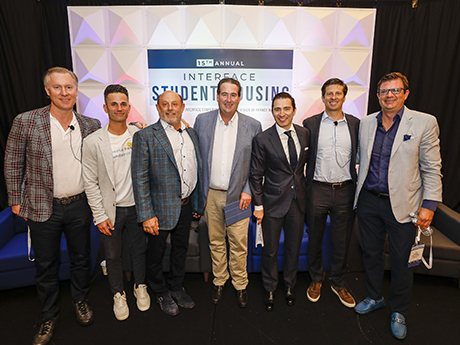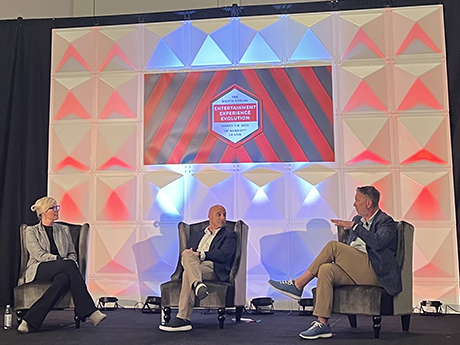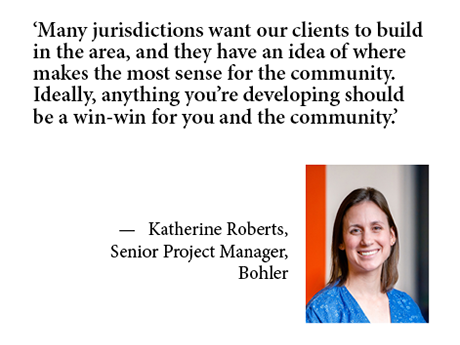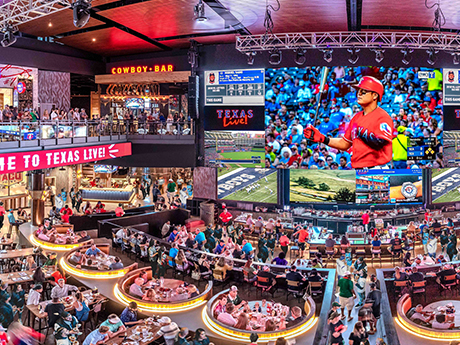From a leasing and rental rate perspective, the outlook couldn’t be brighter in the student housing space. Yardi’s National Student Housing Report saw 96.6 percent of beds leased and an annual rent growth of 4.1 percent for the fall 2022 preleasing season at its ‘Yardi 200’ universities. These numbers are, for obvious reasons, a boon for the industry at large — particularly following several abnormal years surrounding the COVID-19 pandemic. But it isn’t all sunshine and roses where higher rental rates are concerned. Raising the price to live in your properties is a delicate balance, and while there are many inherent benefits to owners and operators, there are also a number of issues that need to be considered — chiefly as it relates to a higher level of expectations from both students and parents. Levels On The Rise The industry’s performance ahead of the fall 2022 semester was nothing short of robust, and Casey Petersen, chief operating officer of PeakMade Real Estate, anticipates rent growth going into the 2023-2024 academic year to be even stronger. “We’ve budgeted for higher rent growth this year, and based on current velocity, we expect to significantly outperform,” he says. This experience is not unique to PeakMade; …
Features
AcquisitionsContent PartnerFeaturesIndustrialMidwestMultifamilyNAINortheastOfficeRetailSoutheastTexasWestern
Tax-Efficient Investment Strategies Open New Opportunities Despite High Interest Rates
The recent Silicon Valley Bank and Signature Bank collapses — and the takeover of First Republic Bank — have revived regulatory scrutiny on bank risk to a degree that is reminiscent of the financial crisis 15 years ago. Suddenly, it seems, everyone is concerned about the trillions of dollars in commercial real estate debt held at banks — and regional and community banks in particular — and whether it can be refinanced at higher interest rates as it matures over the next couple of years. The same holds for hundreds of billions of dollars of commercial mortgage-backed securities. The conditions are exacerbating a pullback in credit that started last year, which, along with the elevated interest rate environment, has depressed commercial real estate investment sales. In February, property sales dropped 51 percent, from $54.9 billion to $26.9 billion from a year earlier, according to MSCI Real Assets. Taken together, the wall of maturities, higher interest rates, bank collapses and a slumping economy have largely spooked the investment market, suggests Spencer Lund, chief investment officer with NAI Legacy in Minneapolis, Minn. (which also serves Chicago, Denver and Scottsdale, Ariz.) Still, it’s also the type of environment that breeds opportunity as prices …
AUSTIN, TEXAS — Experts in the student housing industry are bullish on the outlook for the upcoming academic year, citing the strong performance and outstanding fundamentals of the sector. At the recent 15th annual InterFace Student Housing conference in Austin, industry professionals from around the country convened at the JW Marriott downtown to share insights and discuss industry trends. The first full day of the conference kicked off with the ‘Power Panel’ session, where a consortium of high-level executives provided their outlook for the year ahead. “Evidenced once again by a packed house in this room, the sector is popping,” began moderator Peter Katz, executive director of Institutional Property Advisors. “As we continued to experience unprecedented, off-the-charts asset operations in 2022 and through the first quarter of this year, while simultaneously seeing the most mercurial capital markets we’ve seen in years, we have now statistically proven that the industry is not only recession resilient but pandemic resilient.” The real estate industry has been under a lot of pressure since the summer of 2022 as a result of the rapid rise in the cost of debt, which has created challenges as it pertains to valuing assets. “The recent quarter-point rise has …
AcquisitionsAffordable HousingContent PartnerFeaturesLumentMidwestNortheastSoutheastTexasVideoWestern
Higher Interest Rates Cause Affordable Housing Values to Return to Old Norms
Rising interest rates dinging commercial real estate and multifamily assets have plunged low-income housing tax credit (LIHTC) properties back into reality, especially those coming to the end of their 15-year compliance periods. “There were some huge profits made in the affordable housing space over the last two or three years,” says Cliff McDaniel, a managing director with Lument, which is representing Harmony Housing in the $1.4 billion sale of its affordable housing portfolio to the Michaels Organization. “We sold a lot of properties for $60,000 a unit or even $120,000 a unit, and the debt was $40,000 a unit. But the mania over that type of profitability is over, and values are going back to where they were before.” Up until about five years ago, the phrase “huge profits” and “affordable housing” would rarely if ever have occurred in the same sentence. Or even in the same story. Prior to that, affordable housing properties typically had very little value at the end of their initial 15-year compliance periods, and limited partners who provided equity to the project by buying tax credits routinely agreed to sell their interest to the general partner for a nominal fee. At that point, the …
LOS ANGELES — Whitney Livingston had a question for those in attendance at the annual Entertainment Experience Evolution conference in Los Angeles: Which user — food halls or restaurants — are more beneficial to driving traffic at retail properties? By show of hands, most attendees said food halls. Livingston, president of Centennial REC, was moderating the event’s “Fireside Chat: What’s Better for Traffic, Food Hall or Restaurants?” panel at the JW Marriott LA Live. Each of the categories was embodied in the form of a panelist. Representing food halls was Michael Morris, CEO of the aptly named Food Hall Co., with Rich Renninger, SVP and chief development officer of Darden Restaurants, weighing in from the perspective of more traditional, full-service restaurants. Despite what the name of the panel might suggest and Livingston’s opening poll, the dialogue that emerged between Renninger and Morris did not take on the shape of a debate so much as a conversation that illustrated that, for all their distinctions, there are many commonalities between the two types of food-and-beverage users. Ultimately, the panelists revealed that though food halls and full-service restaurants may take different paths, there is one shared recipe for success: creating a robust customer …
As vacant sites become rare and cost-prohibitive, commercial real estate developers need to be creative when it comes to bringing a new project out of the ground. Unconventional development sites offer cost savings and location advantages, and in-depth due diligence and creativity on the part of developers can make for sites that can allow an elegant union of lower costs and strategy. With limited room for delay, how can developers think critically about available sites and leverage existing conditions to their advantage? Katherine Roberts, senior project manager at Bohler’s Warrenton, VA office, and Gregory Roth, principal at Bohler’s Tampa office, offer their expert advice on threading this needle. Bohler specializes in land development, especially making development work when conventional sites aren’t an option. Prioritizing Development Needs When Assessing Red Flags Certain project factors can be red flags if time or cost are obstacles to a developer, including These points of concern are usually knots that can be untangled if a developer has the time, money and appetite to move forward in spite of these interruptions, but each factor does bear watching. “Developers should understand where their limits are and where they’re willing to negotiate. Ideally, anything you’re developing should be …
Sports-Anchored Entertainment Districts Deliver Experiences Well Beyond Athletics, Say EEE Panelists
LOS ANGELES — As large-scale entertainment districts that are centered around professional sports teams pop up around the country, operators of these developments are realizing that their ability to draw traffic, generate revenue and deliver meaningful experiences goes well beyond the diamond, arena or gridiron. After all, the average professional sports season only lasts about six months — assuming the team qualifies for the postseason — and only half the games are played at home. Given the scope of these projects, in terms of their vast physical footprints and tremendous manpower needed to operate the wide variety of concepts they house, it follows that sports-anchored entertainment districts cannot rely on athletics alone to be successful. At the Entertainment Experience Evolution that took place in Los Angeles in early March, a panel of developers and operators with extensive experience in sports-anchored entertainment districts provided concrete examples of how to achieve this objective. Hosted by Shopping Center Business, the flagship publication of Atlanta-based France Media, the event drew more than 500 people in its eighth annual iteration. Rob Hunden, president and CEO of Hunden Strategic Advisors, a Chicago-based consulting firm for destination-style commercial projects, moderated the discussion. Pioneering Examples John Moncke, a …
By Deborah Smith, co-founder and CEO, The CenterCap Group Industrial outdoor storage (IOS) may have once been an obscure abbreviation, but this subcategory of industrial real estate has now emerged as an intriguing and evolving niche product. Much like single-family rentals (SFR) and self-storage, the asset class still has some way to go before becoming fully institutionalized, but its increasing importance in last-mile distribution makes it a topic worth discussing and placing on investors’ radars. At a high level, IOS properties serve as essential storage facilities for large equipment, vehicles and materials and are often located near transportation hubs, highway corridors and ports of entry. Among other things, these facilities exist to provide secondary storage capacity for logistics operators. So What Is IOS?IOS properties are not the kinds of glamorous properties that commercial investors typically pay much attention to, as they are outdoors and not always aesthetically pleasing to look at. At a basic level, these sites are low-coverage industrial land, generally in the three- to 20-acre range. Buildings typically comprise zero to 20 percent of the site. The property type’s primary value comes from the outside storage capabilities of the excess yard. IOS facilities feature a significantly lower floor …
In a fast-paced, post-pandemic world, the amenities and services that renters expect in multifamily communities are constantly changing. Owners and managers must anticipate what residents will ask for next in order to stay competitive. Predicting What Residents Want There is no crystal ball that allows multifamily owners to foresee what amenities and services future residents will seek when searching for a new home, but there are a few ways in which developers and managers can make sure they’re keeping up with the trends. Although focused on a different customer, sectors such as office and hotel are often ahead of the curve when it comes to meeting the shifting demands of their clientele. Multifamily owners and operators should keep a close eye on what industry leaders in these sectors are doing, such as installing pickleball courts and providing open workspaces and find ways to duplicate those experiences at their own communities. These specific examples have helped Morgan Properties to provide residents with the balance they seek — an active lifestyle that supports the new normal of work from home life. For example, in response to resident demand, we recently began installing outdoor fitness equipment that focuses on body weight and gravity …
By Matthew Mimnaugh, account management manager, Pavlov Media Account management, or the work to ensure repeat business and expand each client relationship, requires more than simply satisfying customers. For Internet service providers (ISPs) to the multifamily industry this means helping property managers succeed by maximizing their residents’ connectivity. Excellent Internet service leads to positive property reviews and renewed leases. Property ownership and management win. Providers that serve landlords best not only respond to service requests, but also employ a deductive approach to diagnose root problems, discover unreported deficiencies and take preemptive actions that allow smooth property operations. Below is an overview of best practices for account management and a discussion of Pavlov Media’s data analysis and behavioral pattern recognition tools we’ve developed to uncover trends and issues that can threaten connectivity and, ultimately, property performance. First Responders Giving housing managers and their residents access to a technology support team is a standard practice for many ISPs. Typically, a request generates a service ticket, and a team member responds to gather basic information before walking the customer through a scripted trouble-shooting tree to either solve the problem or elevate the ticket for more advanced assistance. This approach can be highly effective …











